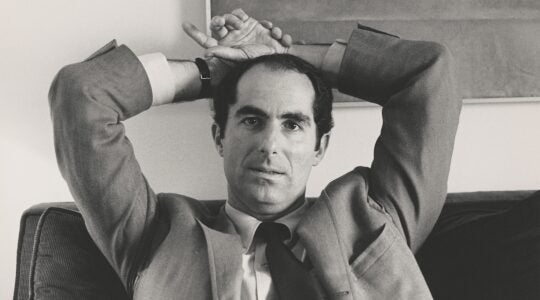While the tragic violence in Mumbai was still unfolding on Nov. 27, a Washington Post report noted: “It is not known how the attackers seized on the low-key Chabad House.”
It was one of several press reports at the time that professed surprise when the best-known Jewish site in the city became a target for the gunmen, later identified as Pakistan-based Islamic terrorists.
”This amazement” on the part of the mainstream media “mystified me, as if there was a strong mystery” as to why the killers were targeting Jews, said Terry Mattingly, who writes the nationally syndicated column, “On Religion,” for the Scripps Howard News Service in Washington, D.C.
Speaking on a panel Monday night at the Graduate School of Journalism at Columbia University on the uneasy relationship between religion and journalism in the U.S., Mattingly cited the Mumbai case as a recent example of a media “blind spot” when it comes to reporting on religion.
He is the author of a chapter in a new book called “Blind Spot: When Journalists Don’t Get Religion” (Oxford University Press), whose thesis is that the general press fail to take religion seriously and, as a result, miss or misread important events and trends, lacking a religious context in covering the news.
One of the editors of the book, Roberta Green Ahmanson, also took part in the program, along with Kenneth Woodward, who was religion editor of Newsweek for 38 years. Ari Goldman, a professor at Columbia’s journalism school who covered religion for 20 years for the New York Times, served as host and had high praise for the book, which he said made the case that “without an understanding of religion, a journalist can miss the greatest stories of our time.”
Indeed, at times it seems that the press has an almost willful ignorance of reality when it comes to religion, like when fundamentalist militants who wage terror or war are described as having primarily political aspirations rather than being motivated by Allah, and therefore far more difficult to reason with. Hamas and Hezbollah come to mind.
Terry Mattingly offered several explanations for such behavior on the part of the press, including “simple ignorance,” fear of Islam and of being perceived as biased against the religion, and striving for moral equivalency.
The general consensus, he said, is that the problem in coverage is the result of ignorance. But Mattingly said more often it is due to a culture clash between mainstream journalists, who overwhelmingly are liberal, and more conservative religious people and institutions.
Citing another Washington Post story, this one from 1993, that described followers of the Christian Right as “largely poor, uneducated and easy to command,” Mattingly observed, “it’s hard to write a story if you lack understanding or empathy” of and for the subject.
Woodward complained about the lack of serious commitment to covering religion in the media, a climate where reporters “have to sell their editors who don’t care” on a story. Too often, he said, religion pages consist of church service listings rather than articles making the connection between major news events and religion.
Ahmanson, a writer and philanthropist, emphasized that “religion is one of the major motivators in people’s lives,” along with “money, sex and power,” and should be treated with more thoughtfulness.
Instead, she said, “religion is perceived” by many in the media “as a crutch for those who are not sophisticated or educated.”
The views offered by the panelists resonated with my experience in observing how the mainstream media covers Jewish issues. Many in our community complain about such treatment, usually insisting that the press probes too often and too deeply into controversial matters rather than more positive ones.
That may be true, and it’s a common charge against the media. But it’s important for us to recognize that the press treats all religions that way, with a tendency to highlight exotica and marginalia. That’s why we see more stories in the daily press about “unkosher” water in New York City and sheitels made in India and husbands who marry again without giving their wife a religious divorce than stories about Jewish education, trips to Israel for young people, and efforts to counter assimilation.
But we should also notice that coverage of Mormons tends to focus on dramatic cases of polygamy, Evangelical Christians are depicted as zealots, and Catholics as in dispute with papal rulings or priestly pedophiles.
It may be small comfort to know that Jewish life is reported on with the same bias as other religious communities, but at least the press are, overall, equal opportunity offenders.
The key theme of the program at Columbia the other night applies not only to coverage of religion but to any press reporting, and that is to first know your subject and take it seriously. Treat it with respect. And then just maybe you will be able to write about it with enough insight and empathy to touch the reader’s mind and heart.
The New York Jewish Week brings you the stories behind the headlines, keeping you connected to Jewish life in New York. Help sustain the reporting you trust by donating today.





